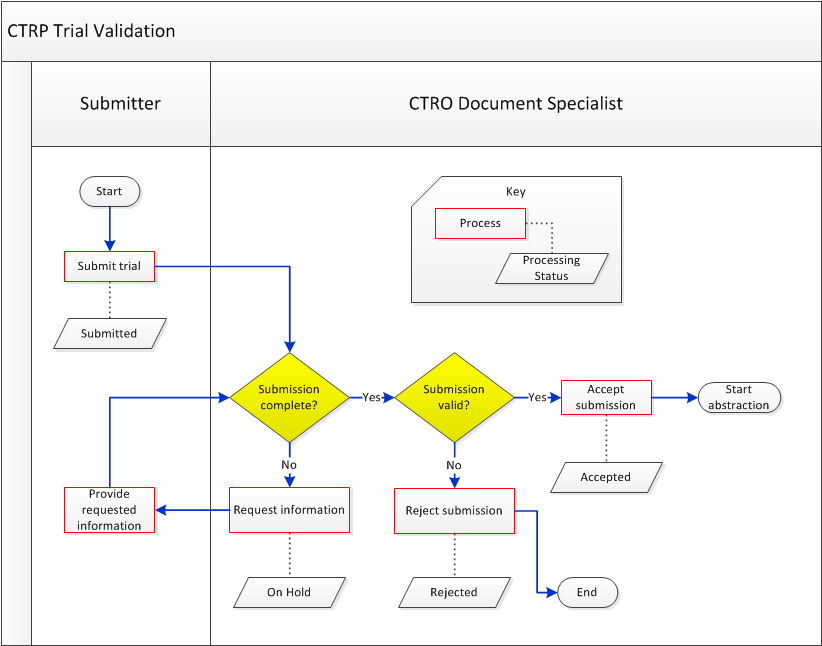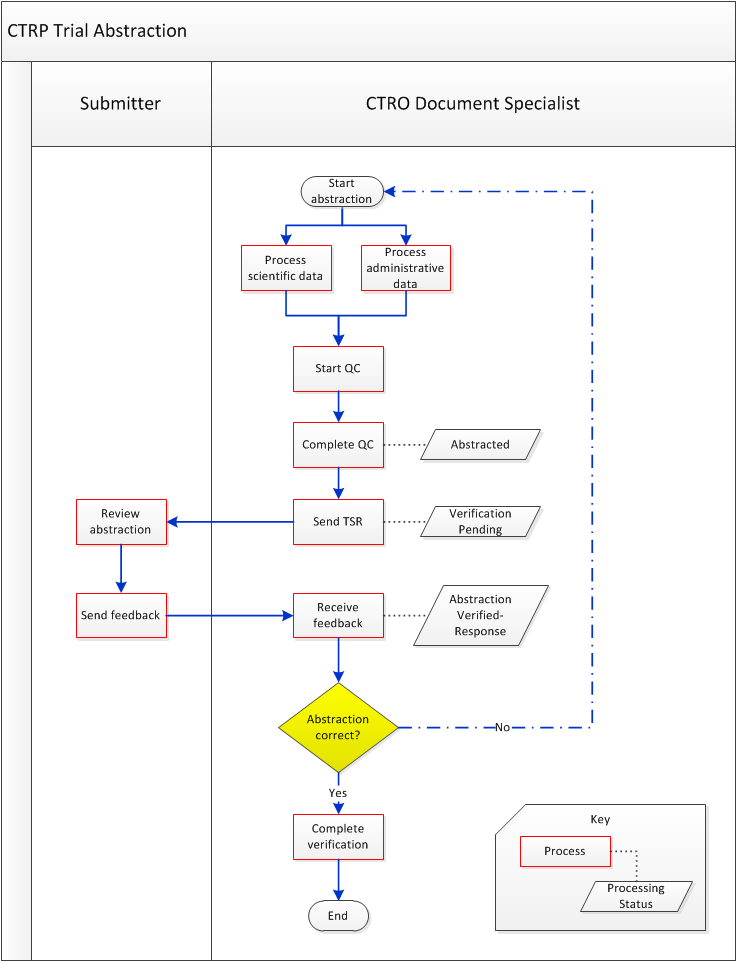This section describes, in words and visually, the typical life cycle of a trial:
- The submitter submits the trial. The trial has a processing status of Submitted.
- The CTRO Document Specialist performs validation on the Submitted trial:
- If the trial is not complete, the specialist sends a request to the submitter for information. The trial has a processing status of On Hold. When the CTRO receives the requested information, a Document Specialist takes the trial off hold. The trial's processing status returns to the previous status, which in this case would be Submitted.
- If the trial is not valid, the specialist rejects the submission. The trial has a processing status of Rejected.
- If the trial is complete and valid, the specialist accepts the submission. The trial has a processing status of Accepted.
- One or more CTRO Document Specialists perform abstraction on the Accepted trial, including administrative processing, scientific processing, and quality control. The trial has a processing status of Abstracted.
- The system sends the Trial Summary Report (TSR) of the Abstracted trial to the submitter. The trial has a processing status of Verification Pending.
- The submitter verifies the abstraction as per the TSR, and returns feedback to the CTRO within five business days after receiving the TSR. (A business day is any weekday that is not a Federal holiday. For a list of Federal holidays, refer to the U.S. Office of Personnel Management's list of Federal Holidays.)The trial has a processing status of Abstraction Verified Response.
- The CTRO Document Specialist decides, based on the feedback received, whether to restart administrative processing, scientific processing, or both for the trial (step 3).
- The CTRO Document Specialist completes the verification.
The following diagrams illustrate the typical life cycle of a trial and the relationship between actions and processing statuses:
For more information, refer to Trial Processing Statuses and Amendment Process Life Cycle.


